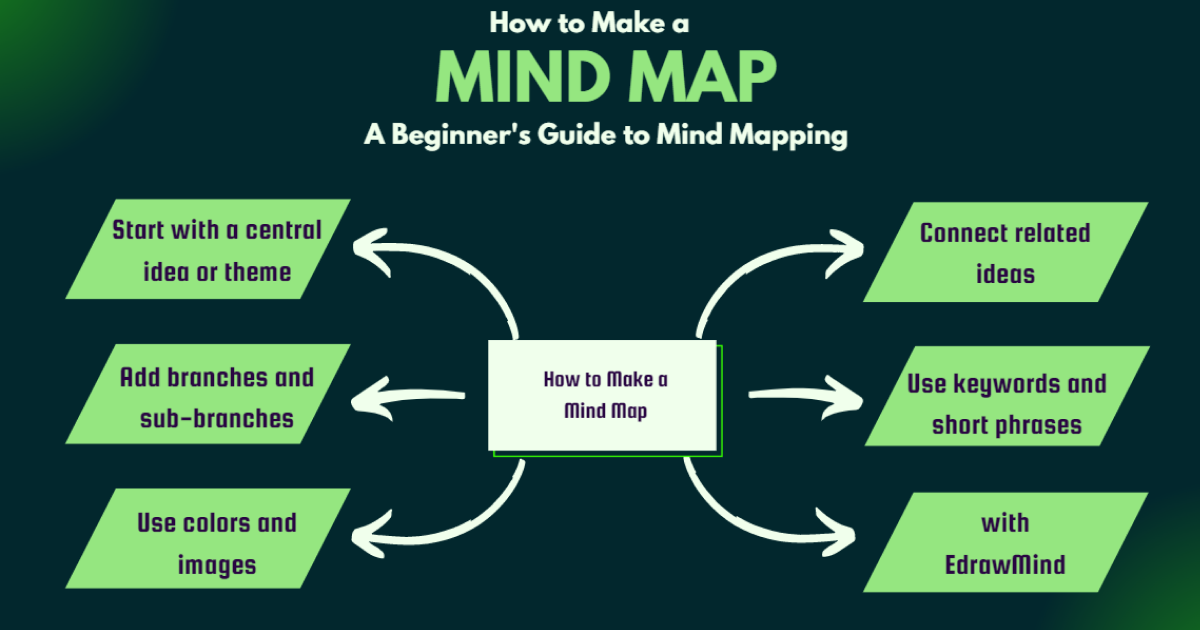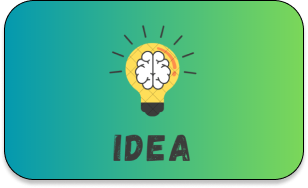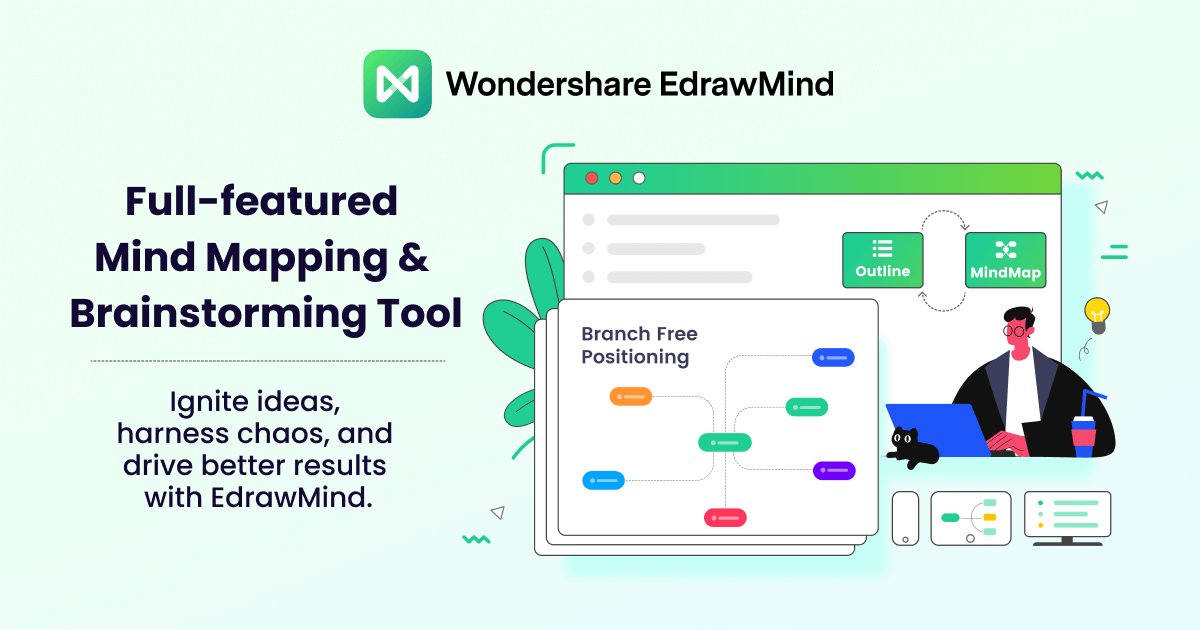How to Make a Mind Map: A Beginner's Guide to Mind Mapping
Need to organize your thoughts? Learn how to make a mind map with this step-by-step guide, and improve your thinking skills today!
Edraw Content Team
Create Mind Maps Today!
EdrawMind is a mind mapping tool equipped with 700+ cliparts. This article presents a step-by-step guide to creating a creative mind map to present your idea elegantly. Try EdrawMind and create hundreds of mind maps today!
Do you often find yourself struggling to organize your thoughts and ideas? Have you ever heard of a mind map? EdrawMind can help you visualize your thoughts and create more effective plans for achieving your goals.
Mind mapping has been used for centuries as a technique for brainstorming, planning, and problem-solving. It is a flexible and creative method that can be applied to a wide range of tasks, from organizing a project to studying for a test.
If you are new to mind mapping, don't worry. This beginner's guide will take you through everything you need to know to create your very own mind map. By the end of this article, you'll have a powerful new tool in your arsenal for achieving your goals and staying organized. So let's get started!

1. What is Mind Map

Lists, bullet points, and outlines are commonly used for organizing thoughts and ideas, but there's another tool that's even more effective: mind maps. A mind map is a diagram that starts with a central idea and expands into related topics and subtopics. It's helpful for understanding complex information, generating new ideas, and communicating thoughts. This article will discuss the advantages of mind mapping, provide a guide on how to make mind maps, and offer tips for optimizing them.
2. Benefits of Mind Mapping
Mind mapping offers a range of benefits, including organizing thoughts and ideas in a structured and visual way. This technique can prove particularly effective when dealing with challenging or abstract information, breaking down complex ideas into smaller, more manageable parts.
- Enhance your memory and ability to retain information.
- Improving creativity and problem-solving abilities can be achieved through various methods.
- Improve the effectiveness of conveying complex ideas.
- Enhance your ability to work together with others.
3. How to Make a Mind Map in General & EdrawMind
There are two main ways to create a mind map: by hand or using mind mapping software. By hand, you can use a pen and paper, sticky notes, or a whiteboard. Using mind mapping software, like EdrawMind, allows you to create professional-looking mind maps with ease, using various templates, icons, and themes. In this guide, we will cover both methods, including how to create a mind map by hand and how to use EdrawMind to create a digital mind map.
# How to Make a Mind Map By Hand

- a. Start with a central idea or theme
To create a mind map, begin by selecting a central idea or theme and writing it in the center of the page or screen. This could be related to a problem, project, or topic of interest.
- b. Add branches and sub-branches
After determining your central idea, begin to incorporate branches to illustrate related topics or subtopics. These branches can be expanded upon by adding additional sub-branches as required. As an illustration, if your central idea is "increasing customer happiness," you may create branches for "product excellence," "customer support," and "pricing."
- c. Use colors and images
Incorporating colors and images can enhance the visual appeal and comprehension of your mind map. Utilizing distinct colors for various types of information or inserting images to signify specific concepts can prove beneficial, particularly when collaborating with a group or conveying your ideas to others.
- d. Connect related ideas
When creating a mind map, it is important to connect related ideas with lines or arrows to visualize their connections and identify patterns, such as linking the branches of "product quality" and "customer service" to demonstrate their relationship.
- e. Use keywords and short phrases
When including text in your mind map, it is recommended to use brief phrases and keywords instead of lengthy sentences or paragraphs. This can assist in keeping your mind map succinct and effortless to read. For instance, instead of composing a lengthy statement regarding the significance of customer satisfaction, you could write "satisfaction drivers" and present them as bullet points.
# How to Make a Mind Map in EdrawMind
Step1 Define the Central Idea or Topic
- To create a concept map, start by defining the central idea or topic. This statement should be brief and capture the essence of what you want to convey. Alternatively, choose a template that suits your goals from EdrawMind's selection of templates for education, business, and personal use.

Step2 Identify Key Concepts or Ideas
- To create a concept map for a central idea, it is important to identify the main branches or key concepts related to the topic. For instance, if the central idea is "The American Revolution," key concepts may include "Boston Tea Party," "Declaration of Independence," and "George Washington."
Step3 Add Main Branches
- To begin your concept map, add main branches that represent the fundamental concepts or ideas connected to your central idea. You can use the shapes and symbols provided by EdrawMind or create your own.
Step4 Connect the Key Concepts or Ideas
- Create connections between your key concepts and central idea using lines or arrows to illustrate their relationships.

Step5 Add Supporting Details
- Create a concept map with supporting details to illustrate the relationship between main ideas.

Step6 Review and Refine the Concept Map
- Review your concept map and make any revisions necessary to ensure clear connections between concepts and easy readability. Consider using EdrawMind's collaboration features to gather feedback and input from others.
4. Mind Mapping Tools and Software
Mind mapping is a creative and effective way of organizing ideas, information, and concepts. It is a technique that can be used for brainstorming, learning, planning, and problem-solving. There are multiple tools and software available for creating mind maps. Here, we will make a list of some of the best mind mapping tools and software and describe each of them in detail.
# EdrawMind
EdrawMind is one of the most popular and powerful mind mapping tools available in the market. It is an all-in-one solution that allows users to create mind maps, flowcharts, organizational charts, and many more. EdrawMind also offers a variety of templates, themes, and symbols to help users design their mind maps easily. Some of the notable features of EdrawMind include collaboration and sharing, presentation mode, Gantt chart view, and cloud storage. It is available for Windows, Mac, and Linux operating systems.
# Mindmeister
Mindmeister is an intuitive mind mapping software that is suitable for both individuals and teams. It offers a user-friendly interface that allows users to create mind maps quickly and easily. Mindmeister also provides collaboration and sharing features that enable teams to work together in real-time. Some of the notable features of Mindmeister are presentation mode, task management, and notes section. It is available as a web-based application and mobile app for Android and iOS.
# Mindmup
Mindmup is a web-based mind mapping tool that is free to use. It offers a simple and clean interface that is perfect for creating basic mind maps. Mindmup also provides integration with Google Drive and Dropbox, which allows users to store and share their mind maps easily. Some of the notable features of Mindmup are collaboration and sharing, presentation mode, and the ability to export mind maps as images, PDFs, or HTML files.
5. Tips for Optimizing Your Mind Map
Here are some suggestions for improving the effectiveness of your mind map. There are several tips that can be followed to optimize a mind map and make it more effective, despite the straightforward process of creating one.
- a. Keep it simple
To create an effective mind map, it is recommended to maintain simplicity by limiting the number of branches and sub-branches. This can prevent clutter and improve readability, allowing for better focus on the key concepts and information.
- b. Use shorthand and abbreviations
When creating a mind map, it's helpful to utilize shorthand and abbreviations in order to maintain clarity and readability. For instance, replacing "customer service" with "CS" can allow for more information to be included on the map without making it overwhelming.
- c. Prioritize information
When creating a mind map, it is important to prioritize the most relevant information by adding branches and sub-branches. This can prevent becoming overwhelmed by unnecessary details. Consider using various visual aids to highlight the most significant information, such as different colors or font sizes.
- d. Review and revise as needed
Creating a mind map requires an iterative approach, and it may be necessary to revise and update it as you progress. It is recommended to regularly review your mind map and make necessary adjustments to increase organization and focus during project work.
6. Conclusion
Mind mapping is a tool to organize thoughts and ideas visually. Follow our step-by-step guide to make a mind map creatly. It helps to understand complex information, brainstorm new ideas, and communicate more effectively. Keep mind maps simple, use shorthand and abbreviations, prioritize information, and review and revise as needed. Mind mapping can help achieve goals for work, school, or personal growth. Try it and see how it benefits you!

What is a Mind Map?
A mind map is an amazing tool for generating ideas and keeping information concise and organized. This article has elaborated in detail what mind maps are and what mind maps are used for.
You May Also Like
How to Make a Mind Map in Word
HOW-TO & TIPS
How to Open and Edit a Mind Map in Office 365
HOW-TO & TIPS
How to Create a OneNote Mind Map
HOW-TO & TIPS
How to Make a Concept Map
HOW-TO & TIPS
